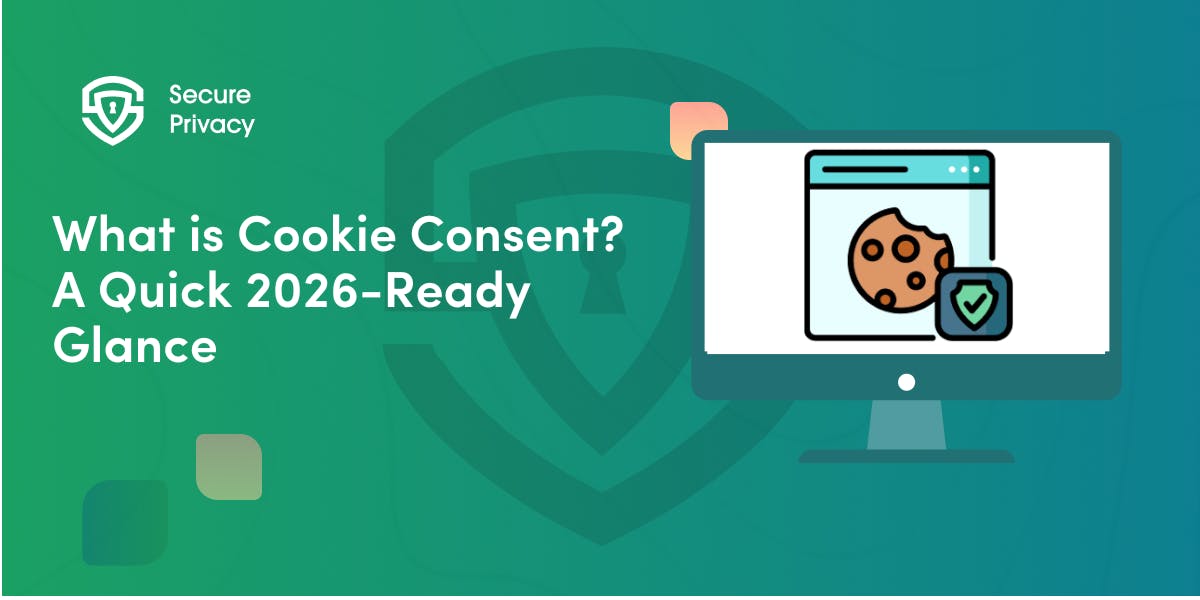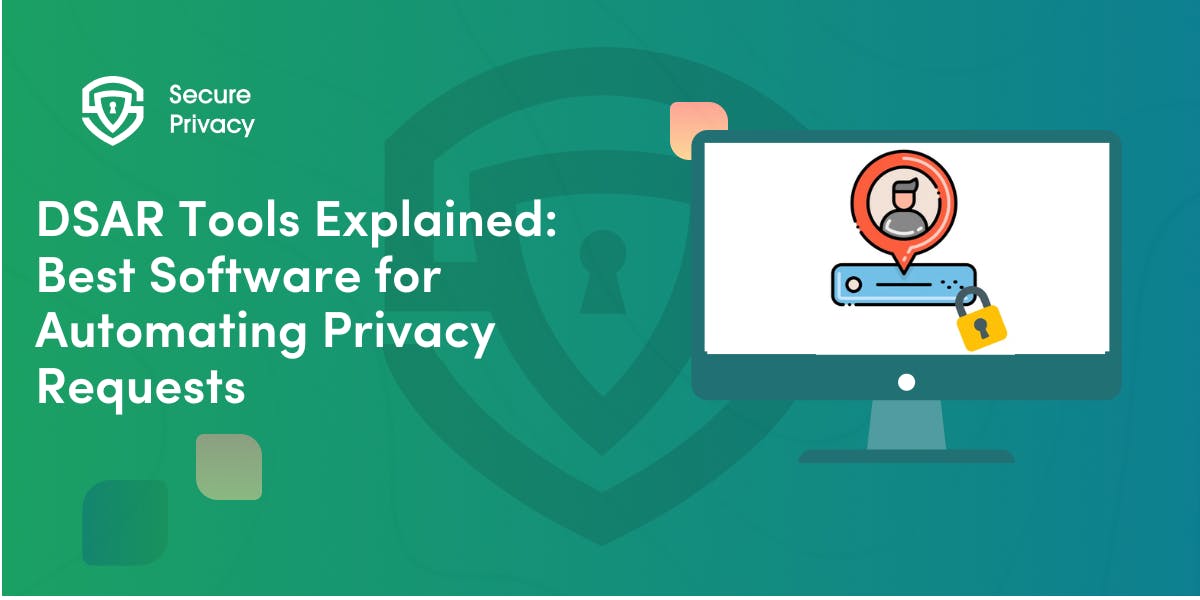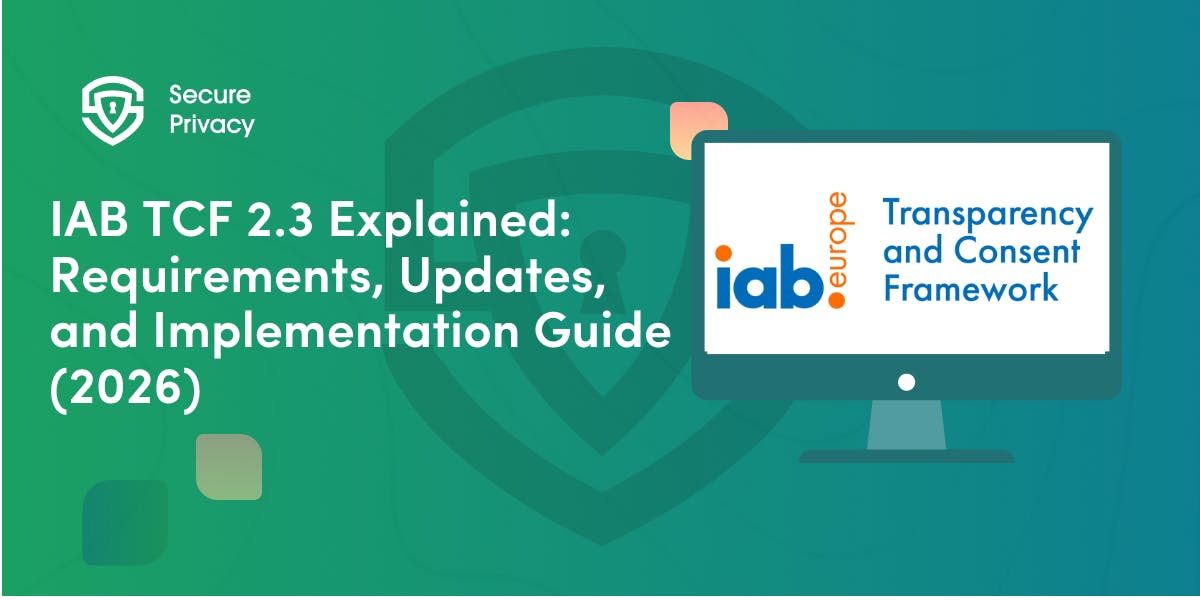CCPA vs. GDPR: What Businesses Need to Know
Businesses operating across international markets face complex data privacy obligations as both the California Consumer Privacy Act (CCPA) and the General Data Protection Regulation (GDPR) impose significant compliance requirements. Understanding the difference between CCPA and GDPR is essential for organizations handling consumer data across jurisdictions.
This comprehensive GDPR vs CCPA compliance guide examines key similarities, critical differences, and practical strategies for managing dual compliance obligations while protecting consumer privacy rights.
What is GDPR?
The General Data Protection Regulation (GDPR) represents the European Union's comprehensive data protection framework, implemented in May 2018. GDPR establishes strict rules for processing personal data of EU residents, regardless of where the processing organization is located.
GDPR Scope and Applicability
GDPR applies to organizations that:
- Establish processing operations within the European Union
- Target EU residents with goods or services, regardless of payment
- Monitor behavior of individuals within the EU through tracking and profiling
The regulation covers any processing of personal data relating to EU residents, creating extraterritorial reach that affects businesses worldwide.
Key GDPR Principles
GDPR establishes six core data protection principles:
Lawfulness, Fairness, and Transparency: Organizations must have a valid legal basis for processing personal data and provide clear information about processing activities.
Purpose Limitation: Personal data must be collected for specified, explicit, and legitimate purposes and not processed incompatibly with those purposes.
Data Minimization: Data collection should be adequate, relevant, and limited to what is necessary for the stated purposes.
Accuracy: Personal data must be accurate and kept up to date, with inaccurate data erased or rectified promptly.
Storage Limitation: Personal data should be kept only as long as necessary for the stated purposes.
Integrity and Confidentiality: Organizations must implement appropriate security measures to protect personal data against unauthorized processing, loss, or damage.
GDPR Enforcement and Penalties
GDPR enforcement occurs through national Data Protection Authorities (DPAs) across EU member states. Penalties are among the world's most severe data protection sanctions:
- Administrative fines: Up to €20 million or 4% of annual global turnover, whichever is higher
- Corrective measures: Orders to cease processing, data deletion requirements, or processing restrictions
- Individual compensation: Data subjects can seek damages for material and non-material harm
Since implementation, GDPR fines have exceeded €1.7 billion, with major penalties against technology companies, airlines, and telecommunications providers.
What is CCPA?
The California Consumer Privacy Act became effective January 1, 2020, establishing comprehensive privacy rights for California residents. The California Privacy Rights Act (CPRA) significantly expanded CCPA requirements starting January 1, 2023.
CCPA Business Thresholds
CCPA applies to for-profit businesses that conduct business in California and meet at least one threshold:
- Annual gross revenue exceeding $25 million (adjusted annually for inflation to $26.625 million in 2025)
- Process personal information of 100,000 or more California residents, households, or devices annually
- Derive 50% or more of annual revenue from selling or sharing California residents' personal information
Key CCPA Principles
CCPA focuses on consumer transparency and control through several core requirements:
Notice at Collection: Businesses must inform consumers about categories of personal information collected and purposes for collection at or before collection.
Opt-Out Rights: Consumers can opt out of the sale or sharing of their personal information through "Do Not Sell or Share My Personal Information" mechanisms.
Transparency Requirements: Privacy policies must disclose categories of personal information collected, sources, business purposes, and third-party sharing practices.
Consumer Rights: California residents have rights to know, access, delete, and correct their personal information.
Stay ahead of CCPA requirements for 2026 to maintain compliance as California privacy law evolves.
CCPA Enforcement and Penalties
The California Privacy Protection Agency (CPPA) enforces CCPA violations, with penalty structures including:
- Unintentional violations: Up to $2,663 per violation (2025 adjustment)
- Intentional violations: Up to $7,988 per violation (2025 adjustment)
- Data breach damages: $107 to $799 per affected consumer
- Injunctive relief: Courts can order corrective actions and compliance measures
Key Similarities Between GDPR and CCPA
Despite different approaches, both regulations share fundamental privacy protection goals:
Consumer Rights Focus
Both GDPR and CCPA grant individuals significant rights regarding their personal data:
- Access rights: Individuals can request information about personal data processing
- Deletion rights: Both allow data erasure under specified circumstances
- Portability rights: Consumers can obtain their data in portable formats
- Non-discrimination protections: Neither law permits adverse treatment for exercising privacy rights
Extraterritorial Reach
Both regulations extend beyond their jurisdictions to protect residents regardless of where businesses are located:
- GDPR: Applies globally when targeting or monitoring EU residents
- CCPA: Covers businesses worldwide that meet revenue thresholds and process California resident data
Data Transparency Requirements
Both laws mandate detailed disclosures about data processing practices:
- Processing purposes: Organizations must explain why they collect personal data
- Data categories: Specific types of personal information must be identified
- Third-party sharing: Disclosure of data sharing with external parties is required
- Retention periods: Information about how long data is stored must be provided
Key Differences Between GDPR and CCPA
While both laws protect privacy, they differ significantly in approach and requirements.
Legal Basis vs. Notice and Opt-Out
GDPR Legal Basis Requirement: Organizations must establish one of six legal bases before processing personal data:
- Consent from the data subject
- Performance of a contract
- Compliance with legal obligations
- Protection of vital interests
- Performance of public tasks
- Legitimate interests (with balancing test)
CCPA Notice and Opt-Out Model: Businesses can collect and process personal information without prior consent but must:
- Provide notice at collection about data use
- Offer opt-out mechanisms for data sales and sharing
- Respect consumer choices to limit processing
See expanded CCPA 2026 notice requirements including AI system disclosures.
Consent Models: Opt-In vs. Opt-Out
GDPR Opt-In Consent: Requires explicit, informed, and unambiguous consent before processing personal data for most purposes. Consent must be:
- Freely given without coercion
- Specific to particular processing purposes
- Informed with clear explanations
- Unambiguous through clear affirmative action
CCPA Opt-Out System: Allows businesses to process personal information by default with mechanisms for consumers to opt out of:
- Sale of personal information to third parties
- Sharing for cross-context behavioral advertising
- Use of sensitive personal information beyond disclosed purposes
CCPA 2026 requirements mandate universal opt-out mechanism support including Global Privacy Control.
Sensitive Data Definitions
GDPR Special Categories: Article 9 defines special categories requiring additional protections:
- Racial or ethnic origin
- Political opinions
- Religious or philosophical beliefs
- Trade union membership
- Genetic data
- Biometric data for identification
- Health data
- Sex life or sexual orientation data
CCPA Sensitive Personal Information: Includes broader categories with different protection requirements:
- Social Security, driver's license, and government identification numbers
- Account login credentials and financial account information
- Precise geolocation data
- Racial or ethnic origin, religious beliefs, union membership
- Private communications content
- Genetic data, biometric information, health data
- Sex life and sexual orientation information
Penalty Structures
GDPR Fines vs CCPA Fines demonstrate significantly different enforcement approaches:
- €20 million or 4% of global annual turnover
- Calculated based on severity, intent, cooperation, and impact
- Applied per violation with potential for multiple violations per incident
- $7,988 per intentional violation
- $2,663 per unintentional violation
- $799 maximum per consumer in data breach cases
- Significantly lower financial impact compared to GDPR
Scope of Personal Data
GDPR Personal Data Definition: Covers any information relating to an identified or identifiable natural person, including:
- Direct identifiers (names, identification numbers)
- Indirect identifiers (location data, online identifiers)
- Factors specific to physical, physiological, genetic, mental, economic, cultural, or social identity
CCPA Personal Information Definition: Broadly includes information that identifies, relates to, or could reasonably be linked with a particular consumer or household:
- Traditional identifiers and contact information
- Commercial information and purchasing behaviors
- Biometric information and internet activity
- Geographic location and employment information
- Professional or educational information
Compliance Implications for Businesses
Organizations operating in both jurisdictions face complex compliance challenges requiring coordinated privacy strategies.
Dual Compliance Challenges
Conflicting Requirements: GDPR's opt-in consent model conflicts with CCPA's opt-out approach, requiring businesses to implement different consent mechanisms based on user location.
Data Mapping Complexity: Organizations must maintain comprehensive data inventories supporting both GDPR's lawful basis documentation and CCPA's transparency requirements.
Consumer Rights Management: Businesses must handle both GDPR data subject requests and CCPA consumer rights requests with different timelines, verification requirements, and scope limitations.
Marketing and Advertising Implications
Cookie Consent Management: GDPR requires explicit consent for non-essential cookies, while CCPA focuses on opt-out mechanisms for data sharing and behavioral advertising.
Third-Party Data Sharing: GDPR's legitimate interests assessments differ from CCPA's "sale" and "sharing" definitions, requiring nuanced approaches to advertising partnerships.
Cross-Border Data Transfers: GDPR's adequacy decisions and standard contractual clauses must be coordinated with CCPA's service provider agreement requirements.
CCPA requirements in 2026 introduce additional obligations for businesses.
Technology Implementation Considerations
Consent Management Platforms: Must support both opt-in consent collection for GDPR and opt-out mechanisms for CCPA while maintaining user preference synchronization.
Data Processing Systems: Need capabilities to apply different legal bases under GDPR while respecting CCPA opt-out choices for the same data subjects.
Rights Request Management: Systems must accommodate different verification standards, response timelines, and data delivery formats for each regulation.
Comparative Analysis: CCPA vs GDPR
| Feature | GDPR | CCPA |
|---|
| Geographic Scope | Global (EU residents) | California residents | |
| Business Threshold | No revenue threshold | $26.625M revenue or 100K+ residents | |
| Legal Basis Required | Yes (6 specific bases) | No (notice and opt-out sufficient) | |
| Consent Model | Opt-in (explicit consent) | Opt-out (default processing allowed) | |
| Maximum Fines | €20M or 4% global revenue | $7,988 per intentional violation | |
| Data Subject Rights | 8 comprehensive rights | 4 core consumer rights | |
| DPO Requirement | Required for certain processing | No specific requirement | |
| Breach Notification | 72 hours to authorities | No specific timeline to authorities | |
| Sensitive Data Protection | Special consent required | Opt-out for certain uses | |
| Third-Party Transfers | Adequacy or safeguards required | Service provider agreements | |
| Private Right of Action | Yes (for data breaches) | Limited (data breaches only) | |
| Regulatory Authority | Multiple national DPAs | California Privacy Protection Agency |
Best Practices for Dual Compliance
Organizations can implement unified privacy programs addressing both GDPR and CCPA requirements through strategic approaches.
Unified Privacy Framework
Adopt GDPR as Baseline: GDPR's comprehensive requirements generally exceed CCPA standards, making GDPR compliance a solid foundation for meeting both regulations.
Implement Layered Consent: Use geolocation detection to present appropriate consent mechanisms - explicit opt-in for EU users and clear opt-out options for California residents.
Maintain Comprehensive Data Inventories: Document data processing activities with sufficient detail to support both GDPR's lawful basis requirements and CCPA's transparency obligations.
Technology Solutions
Advanced Consent Management: Deploy platforms capable of handling complex consent scenarios across jurisdictions while maintaining preference synchronization.
Automated Compliance Monitoring: Implement systems that continuously verify compliance with both regulations and alert to potential violations.
Unified Rights Management: Establish portals capable of handling both GDPR data subject requests and CCPA consumer rights requests with appropriate workflows.
Organizational Processes
Cross-Functional Privacy Teams: Include legal, technical, marketing, and operations representatives to address compliance implications across business functions.
Regular Compliance Audits: Conduct assessments covering both GDPR and CCPA requirements with particular attention to areas where obligations may conflict.
Staff Training Programs: Educate teams on both regulations with emphasis on practical implementation differences and decision-making frameworks.
Ongoing Compliance Management
Regulatory Monitoring: Track developments in both jurisdictions, including GDPR guidance from European Data Protection Board and CCPA regulations from California Privacy Protection Agency.
Vendor Management: Ensure service providers and technology partners can support dual compliance requirements with appropriate contractual protections.
Documentation Maintenance: Keep detailed records demonstrating compliance efforts, decision-making processes, and corrective actions for both regulatory frameworks.
Organizations can implement unified privacy programs addressing both GDPR and CCPA requirements. These implementations must account for diverse device types including Android TV platforms which present unique consent interface challenges across different regulatory jurisdictions.
Future Trends and Considerations
The data privacy landscape continues evolving with new regulations and enforcement patterns affecting global compliance strategies.
Regulatory Convergence
US Federal Privacy Legislation: Proposed federal privacy laws may create unified US standards reducing complexity between state regulations like CCPA.
Global Privacy Standards: International cooperation on privacy frameworks may lead to more harmonized approaches between regions.
Sector-Specific Requirements: Healthcare, financial services, and artificial intelligence applications face additional privacy requirements layered on top of general frameworks.
Technology Evolution
Privacy-Enhancing Technologies: Advanced techniques like differential privacy, homomorphic encryption, and secure multi-party computation may simplify compliance while protecting data utility.
Automated Compliance: Machine learning and AI systems increasingly support real-time compliance monitoring and decision-making across multiple regulatory frameworks.
Decentralized Data Management: Blockchain and distributed systems create new challenges and opportunities for privacy compliance across jurisdictions.
Conclusion
Understanding CCPA vs GDPR differences is essential for businesses operating in global markets where consumer privacy expectations continue rising. While both regulations aim to protect personal data and enhance transparency, their different approaches to consent, enforcement, and scope create complex compliance obligations that require strategic planning.
This data privacy law comparison demonstrates that organizations adopting comprehensive privacy programs addressing both GDPR vs CCPA compliance requirements position themselves for success in an increasingly regulated environment. The investment in robust privacy infrastructure delivers long-term value through reduced regulatory risk, enhanced consumer trust, and competitive advantages in privacy-conscious markets.
The key difference between CCPA and GDPR lies in their fundamental approaches: GDPR's comprehensive opt-in consent model versus CCPA's transparency-focused opt-out system. However, both frameworks share common goals of empowering consumers and requiring organizational accountability for data processing activities.
Ready to implement unified GDPR and CCPA compliance? Modern privacy governance platforms can automate consent management across jurisdictions, streamline consumer rights handling, and provide comprehensive compliance monitoring for both regulations

What is Cookie Consent? A Quick 2026-Ready Glance
Your website loads. Cookies track users. But without proper cookie consent, you're violating GDPR — risking fines up to €20 million or 4% of global revenue. Cookie consent is the legally required mechanism by which websites obtain explicit user approval before deploying non-essential tracking technologies. This requirement stems from GDPR Article 4(11) and the ePrivacy Directive, mandating that consent must be freely given, specific, informed, and unambiguous.
- Legal & News

DSAR Tools Explained: Best Software for Automating Privacy Requests
You're drowning in data subject access requests. Manual searches through dozens of systems miss regulatory deadlines and expose organizations to fines starting at $2,500 per violation. The solution? DSAR tools — purpose-built software that automates the entire process of responding to data subject access requests, from intake to delivery.
- Legal & News

IAB TCF 2.3 Explained: Requirements, Updates, and Implementation Guide (2026)
Your ad revenue dropped 40% overnight. Google stopped bidding on your inventory. Your DSP partners flagged your traffic as non-compliant. The culprit? An outdated TCF 2.2 consent string after the February 2026 enforcement deadline.
- Legal & News
- Cookie Consent
